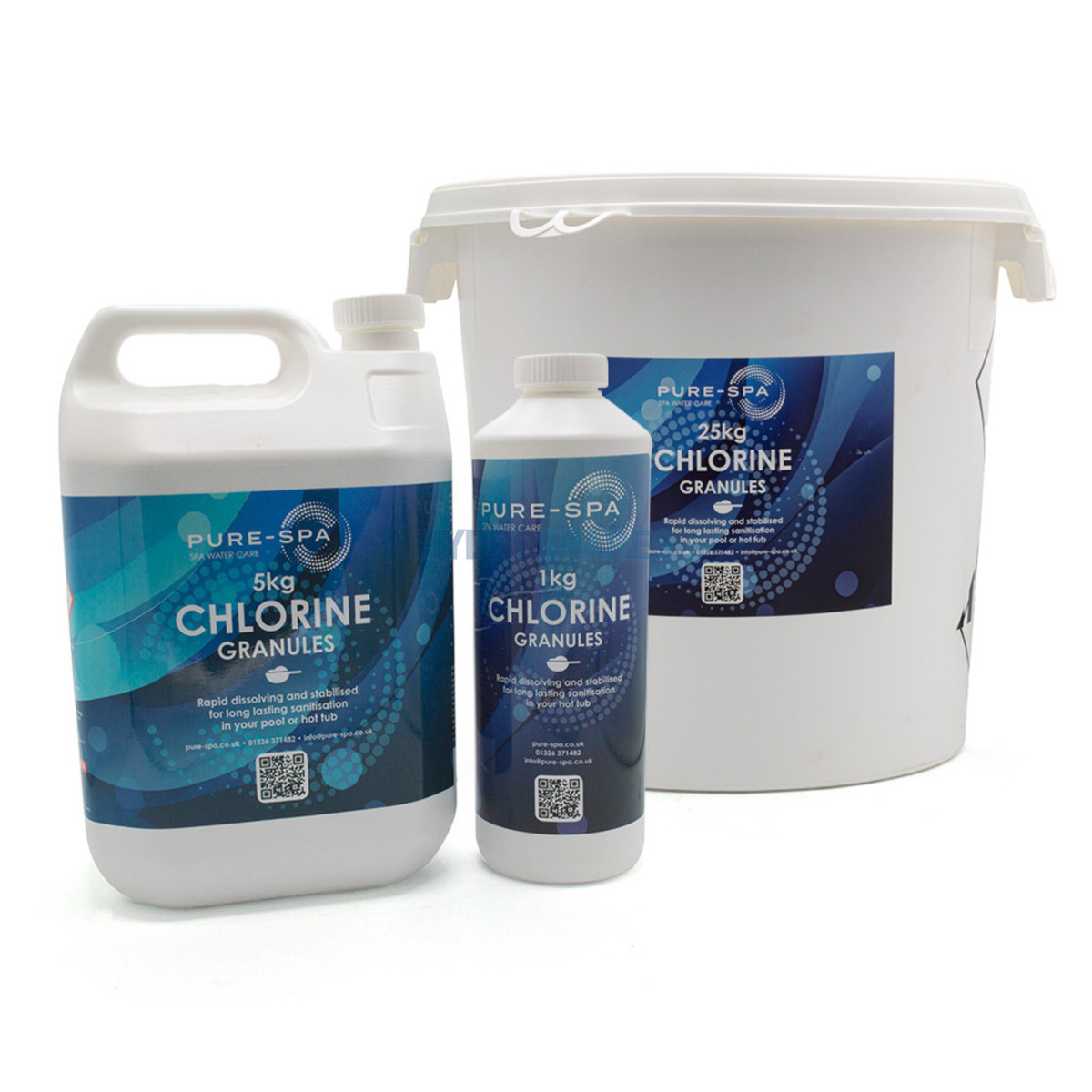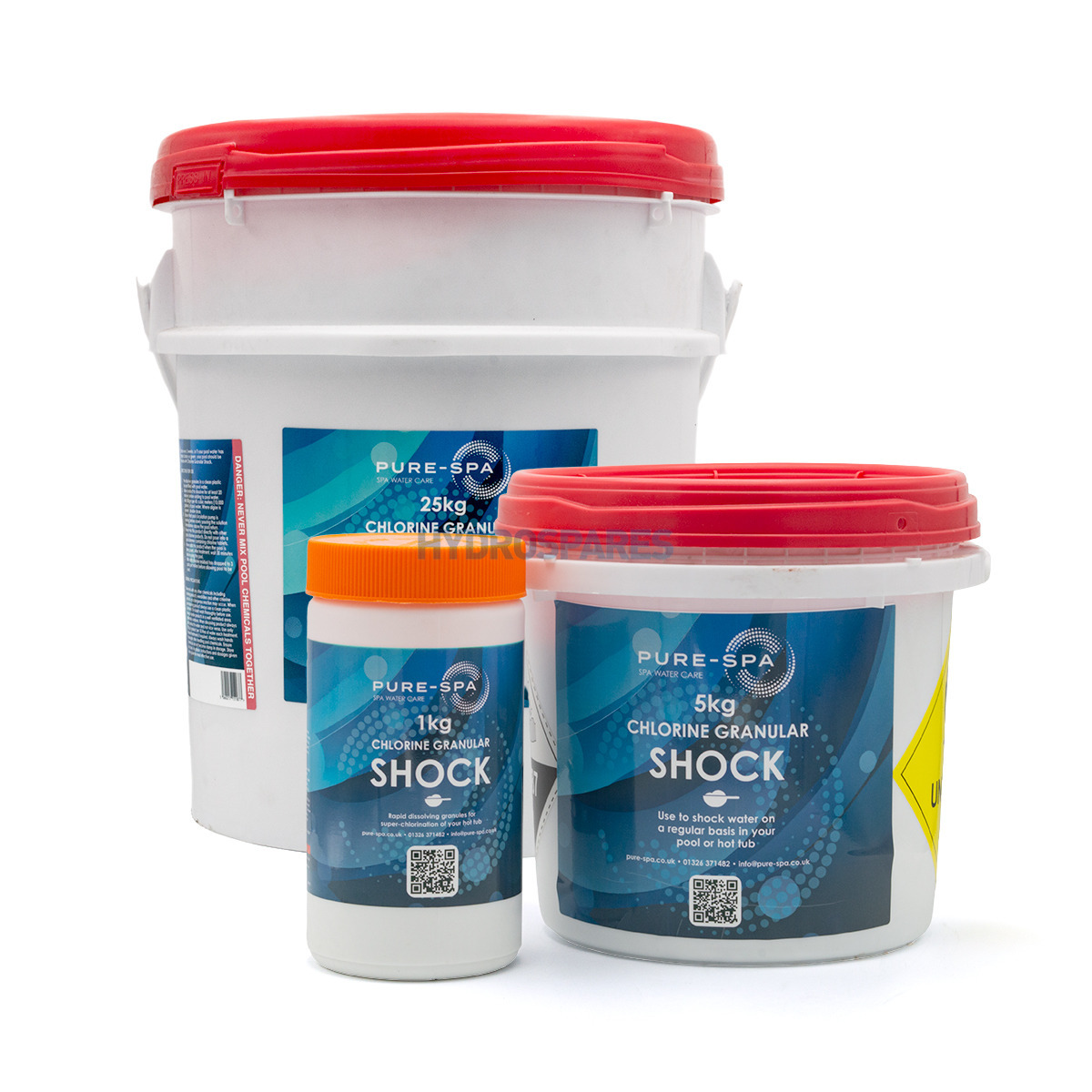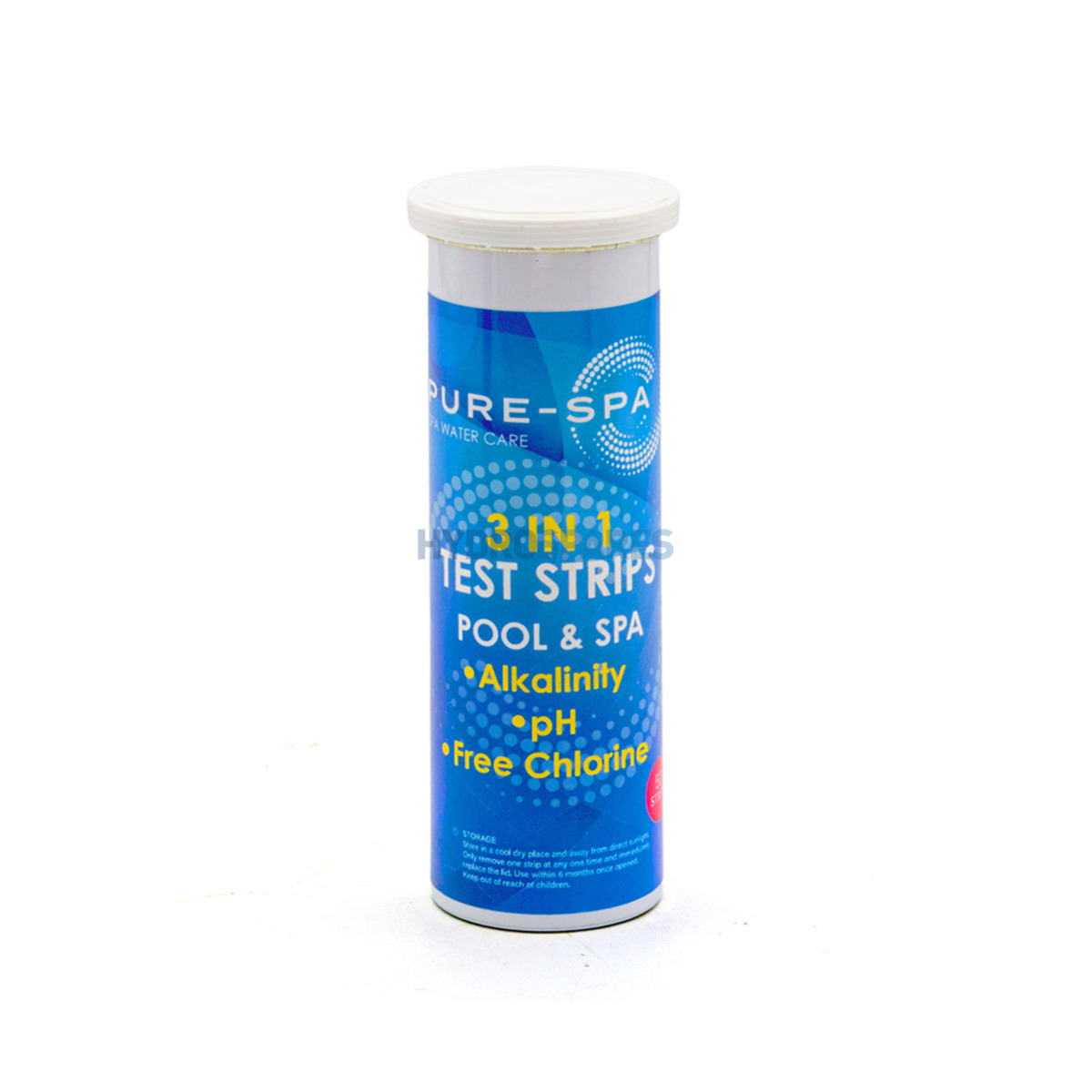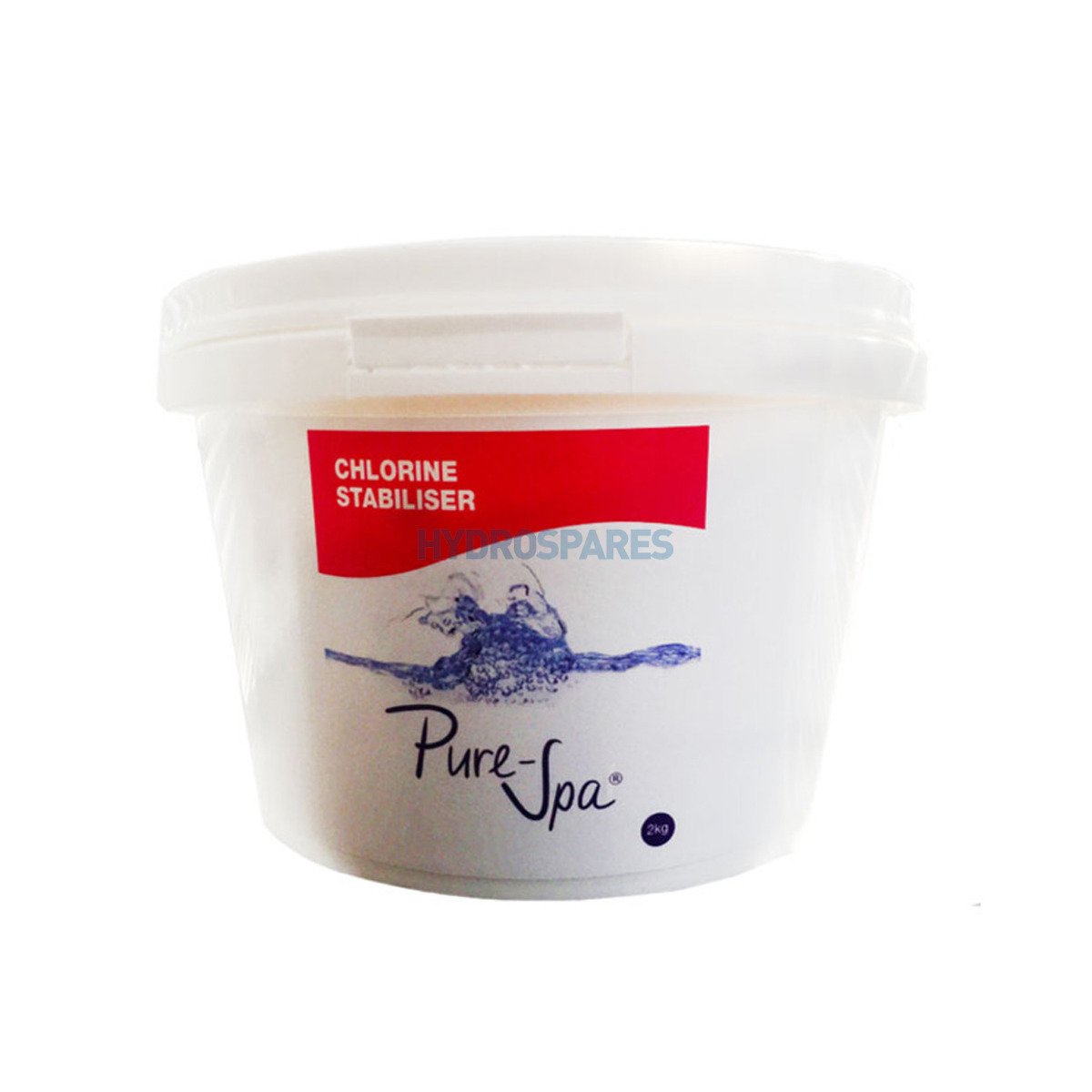Keeping your pool water clean, clear, and safe isn't as complex as it might seem, but it does require consistent attention and the right chemical balance. Here's a straightforward guide to the key chemicals every pool owner should know about—and how to use them safely.
Safety First!
- Before adding chemicals, make sure you are wearing the appropriate PPE such as goggles, gloves, and masks
- Always add chemicals to water—not the other way around
- Store chemicals in a cool, dry, ventilated area, below 35°C
- Store chemicals separately by type, in labelled containers
- Always refer to the safety information on the labels of each chemical
- Find the chemical safety data sheet and keep them accessible for spills and other emergencies
Chlorine
Maintain chlorine at 1-3 ppm; shock every 1-2 weeks
Chlorine is the most widely used sanitiser for swimming pools. To keep your water safe, maintain a free chlorine level between 1-3ppm (parts per million). Letting chlorine levels drop to zero can lead to algae growth—even if the water still looks clear.
If algae develops, a super chlorination (also known as chlorine shock) is needed to kill it and oxidise any waste compounds. To prevent chloramine buildup—the main culprit behind strong chlorine smells and eye irritation—we recommend applying a shock dose of chlorine every 1–2 weeks, depending on pool use.
Stabiliser (Cyanuric Acid):
Cyanuric Acid, often called pool stabiliser, protects chlorine from breaking down too quickly under sunlight. Maintain stabiliser levels between 30-50 ppm to optimise chlorine efficiency. Be cautious—too much stabiliser can reduce chlorine effectiveness, requiring water dilution to correct. .
"
"

Rapid dissolving and ideal for daily disinfection.
View Product
Ideal for raising Chlorine readings without impacting stabiliser readings
View Product
A simple and reliable way to monitor your hot tub water chemistry
View ProductBromine
Maintain bromine at 3-5 ppm; best for indoor or shaded pools.
While Bromine is commonly used for hot tubs, it can also be used in swimming pools, particularly indoor pools or shaded outdoor pools where sunlight degradation is less of an issue. Bromine remains more effective than chlorine at higher temperatures and remains stable across a wider pH range than chlorine.
For swimming pools using bromine, aim for levels of 3-5 ppm. It's worth emphasising that bromine is not UV stable and breaks down quickly in direct sunlight; therefore, whilst a bromine sanitisation approach is a viable option for indoor or shaded pools, it's not suitable for outdoor pools.
If you opt for bromine in your pool, use it alongside a non-choline oxidiser to keep the water clear and sanitised.
Algaecides
Apply long-life algaecide regularly and after backwashing
Prevention is always better than a cure when it comes to algae. Algaecides help your sanitiser keep algae at bay. We recommend using a long-life algaecide and topping it up with a maintenance dose as needed, especially after backwashing.
If you have a concrete pool, avoid copper-based algaecides as they can cause staining.
pH & Total Alkalinity
Keep TA at 80-150 ppm and pH between 7.2–7.6.
- Total Alkalinity (TA): Helps stabilise pH levels. Aim for 80-150 ppm. In hard water areas, high TA can cause scale formation, especially on heaters
- pH: Measures how acidic or alkaline your pool water is, from 0 (acidic) to 14 (alkaline). Keep pH levels between 7.2 and 7.6 for sanitiser efficiency and swimmer comfort. Use pH+ or pH- granules to adjust. Keep a careful eye on your pH levels, especially in a commercial setting. Test with test strips or a digital photometer for unparalleled accuracy
Clarifiers and Flocculants
Use clarifiers for clear water. Use flocculants for heavy cloudiness.
Tiny, suspended particles can evade filtration. To tackle this:
- Clarifiers: Bind small particles, making them easier for filters to catch, improving water clarity.
- Flocculants: Clump particles that sink to the pool floor for vacuuming to waste. Best used by experienced pool operators.
Because flocculants require vacuuming from the bottom of the pool, the pool will require a temporary shutdown while cleaning is undertaken.
To reduce the dependence on clarifiers, remember to change the media in your sand filter every 3 years.
Weekly Maintenance Routine
Establish a weekly routine to keep your pool in top condition.
Conclusion
By following these guidelines and maintaining a consistent schedule, you’ll ensure your pool water stays clean, safe, and inviting all season long. Proper chemical management not only protects your equipment and swimmers but also extends the life of your pool and filtration systems. For a complete range of pool and spa chemicals, check out our Pure-Spa range, exclusive to Hydrospares and select retailers.
Always follow local regulations and manufacturer instructions when handling pool chemicals.





